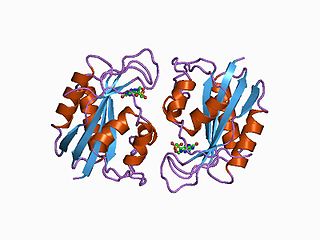The Misuse of Drugs Act 1977, the Misuse of Drugs Act 1984, Misuse of Drugs Act 2015 and the Criminal Justice Act 2010 are the acts of the Oireachtas regulating drugs in Ireland. The acts define the penalties for unlawful production, possession and supply of drugs.

The Misuse of Drugs Act is a drug control law in Singapore classifying substances into three categories, Classes A, B, and C. Section 44 provides that "The Minister may, by an order published in the Gazette" add, remove, or transfer drugs among the classes. The statute's penal provisions are severe by most nations' standards, providing for long terms of imprisonment, caning, and capital punishment. The law creates a presumption of trafficking for certain threshold amounts, e.g. 30 grams of cannabis. It also creates a presumption that a person possesses drugs if he possesses the keys to a premises containing the drugs, and that "Any person found in or escaping from any place or premises which is proved or presumed to be used for the purpose of smoking or administering a controlled drug shall, until the contrary is proved, be presumed to have been smoking or administering a controlled drug in that place or premises." Thus, one runs the risk of arrest for drug use by simply being in the company of drug users. The law also allows officers to search premises and individuals, without a search warrant, if he "reasonably suspects that there is to be found a controlled drug or article liable to seizure". Moreover, Section 31 allows officers to demand urinalysis of suspected drug offenders.
The Controlled Drugs and Substances Act is Canada's federal drug control statute. Passed in 1996 under Prime Minister Jean Chrétien's government, it repeals the Narcotic Control Act and Parts III and IV of the Food and Drugs Act; and establishes eight Schedules of controlled substances and two Classes of precursors. It provides that "The Governor in Council may, by order, amend any of Schedules I to VIII by adding to them or deleting from them any item or portion of an item, where the Governor in Council deems the amendment to be necessary in the public interest."

Nimetazepam is an intermediate-acting hypnotic drug which is a benzodiazepine derivative. It was first synthesized by a team at Hoffmann-La Roche in 1962. It possesses hypnotic, anxiolytic, sedative, and skeletal muscle relaxant properties. Nimetazepam is also an anticonvulsant. It is sold in 5 mg tablets known as Erimin and Lavol. It is generally prescribed for the short-term treatment of severe insomnia in patients who have difficulty falling asleep or maintaining sleep. The sole global manufacturer of Nimetazepam has ceased manufacturing Erimin since early November 2015. Patients being prescribed Erimin are being switched to Lavol and other hypnotics, e.g. estazolam, nitrazepam, flunitrazepam, etc.

Fludiazepam, marketed under the brand name Erispan (エリスパン) is a potent benzodiazepine and 2ʹ-fluoro derivative of diazepam, originally developed by Hoffman-La Roche in the 1960s. It is marketed in Japan and Taiwan. It exerts its pharmacological properties via enhancement of GABAergic inhibition. Fludiazepam has 4 times more binding affinity for benzodiazepine receptors than diazepam. It possesses anxiolytic, anticonvulsant, sedative, hypnotic and skeletal muscle relaxant properties.

Flutoprazepam (Restas) is a drug which is a benzodiazepine. It was patented in Japan by Sumitomo in 1972 and its medical use remains mostly confined to that country. Its muscle relaxant properties are approximately equivalent to those of diazepam - however, it has more powerful sedative, hypnotic, anxiolytic and anticonvulsant effects and is around four times more potent by weight compared to diazepam. It is longer acting than diazepam due to its long-acting active metabolites, which contribute significantly to its effects.

In enzymology, a 2-amino-4-hydroxy-6-hydroxymethyldihydropteridine diphosphokinase is an enzyme that catalyzes the chemical reaction

IDRA-21 is a positive allosteric modulator of the AMPA receptor and a benzothiadiazine derivative. It is a chiral molecule, with (+)-IDRA-21 being the active form.

GYKI-52466 is a 2,3-benzodiazepine that acts as an ionotropic glutamate receptor antagonist, which is a non-competitive AMPA receptor antagonist, orally-active anticonvulsant, and skeletal muscle relaxant. Unlike conventional 1,4-benzodiazepines, GYKI-52466 and related 2,3-benzodiazepines do not act on GABAA receptors. Like other AMPA receptor antagonists, GYKI-52466 has anticonvulsant and neuroprotective properties.
Drugs controlled by the United Kingdom (UK) Misuse of Drugs Act 1971 are listed in this article. These drugs are known in the UK as controlled drugs, because this is the term by which the act itself refers to them. In more general terms, however, many of these drugs are also controlled by the Medicines Act 1969, there are many other drugs which are controlled by the Medicines Act but not by the Misuse of Drugs Act, and other substances which may be considered drugs are controlled by other laws.
The major drug laws of India are the Narcotic Drugs and Psychotropic Substances Act (1985) and the Prevention of Illicit Trafficking in Narcotic Drugs and Psychotropic Substances Act (1985).
Safotibant (INN) also known by the research code LF22-0542 is a non-peptide bradykinin B1 antagonist. It displayed binding Ki values of 0.35 and 6.5 nM at cloned human and mouse B1 receptors, respectively, while having no affinity for either human, mouse, or rat B2 receptors at concentrations up to 10 μM. This means that LF22-0542 is at least 4000 times selective for the B1 receptor over the B2 receptor. Systemic administration of LF22-0542 inhibited acute pain induced by acetic acid, formalin, and a hot plate. It also reversed acute inflammatory pain induced by carrageenan, and persistent inflammatory pain induced by CFA. In a neuropathic pain model, LF22-0542 reversed the thermal hyperalgesia, but not the mechanical hyperalgesia.

SL-164 is an analogue of methaqualone developed in the late 1960s by a team at Sumitomo. SL-164 has similar sedative, hypnotic and anticonvulsant properties to the parent compound, but was never marketed for clinical use.

Nifoxipam is a benzodiazepine that is a minor metabolite of flunitrazepam and has been sold online as a designer drug.
Portaria nº 344/1998 is the Brazilian Controlled Drugs and Substances Act, Brazil's federal drug control statute, edited by Brazilian Ministry of Health, through its National Health Surveillance Agency. The "Portaria" also serves as the implementing legislation for the Single Convention on Narcotic Drugs, the Convention on Psychotropic Substances, and the United Nations Convention Against Illicit Traffic in Narcotic Drugs and Psychotropic Substances.
Methylphosphinic acid is a monobasic acid, the simplest of the phosphinic acids. A central phosphorus atom is connected to a hydroxy group, a hydrogen atom, a methyl group and an oxygen. Derivatives of methylphosphinic acid can have the phosphorus connected hydrogen atom replaced by other organic groups. In early days what is now called methylphosphonic acid was also called methylphosphinic acid.























